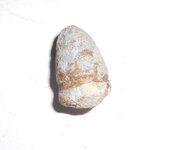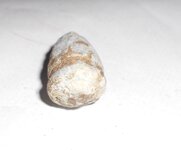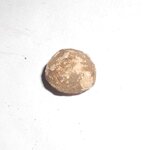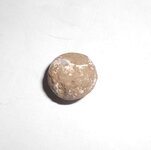Kevo_DFX
Hero Member
Hi there.
I have included three pictures of projectiles I found on or near a small civil war fort in MD. The first is a small conical bullet, the second is a very small ball, the third is a large ball. All were fired so the length and width measurements may not be 100% accurate.
Small conical bullet: 12.7 grams, 18.3 mm x 10.8 mm
Small Ball: 8.1 grams, 13.1 mm
Large ball: 25.6 grams, 16.8 mm
Any help with identification would be appreciated.
I have included three pictures of projectiles I found on or near a small civil war fort in MD. The first is a small conical bullet, the second is a very small ball, the third is a large ball. All were fired so the length and width measurements may not be 100% accurate.
Small conical bullet: 12.7 grams, 18.3 mm x 10.8 mm
Small Ball: 8.1 grams, 13.1 mm
Large ball: 25.6 grams, 16.8 mm
Any help with identification would be appreciated.








